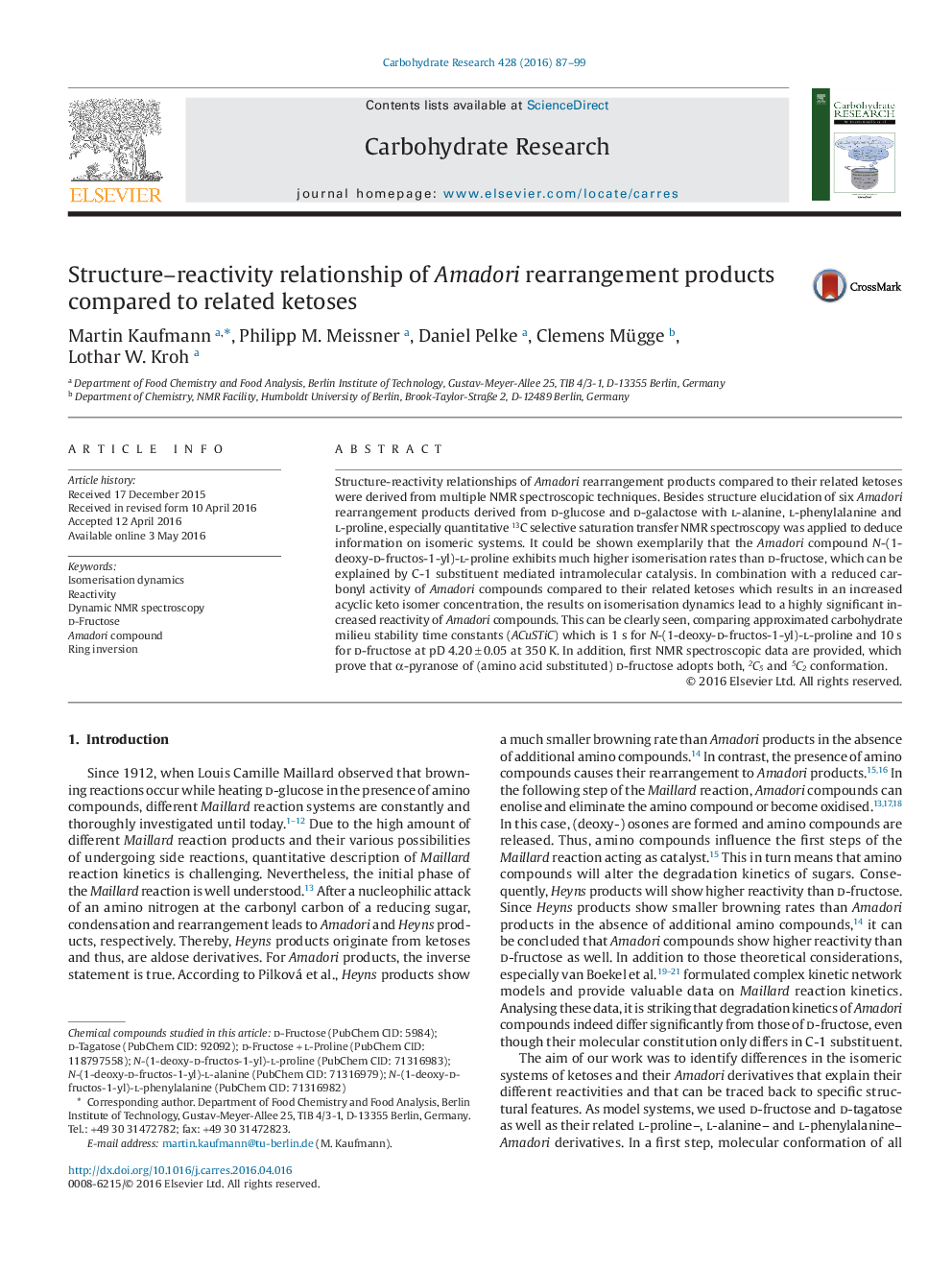| Article ID | Journal | Published Year | Pages | File Type |
|---|---|---|---|---|
| 1390054 | Carbohydrate Research | 2016 | 13 Pages |
•Sugar degradation kinetics are related to isomerisation dynamics.•Amadori rearrangement products show complex isomerisation/mutarotation.•Isomerisation rates depend on C-1 substituent mediated intramolecular catalysis.•Fast 5C2 ↔ 2C5 ring inversion occurs in case of d-fructose-derived α-pyranoses.
Structure-reactivity relationships of Amadori rearrangement products compared to their related ketoses were derived from multiple NMR spectroscopic techniques. Besides structure elucidation of six Amadori rearrangement products derived from d-glucose and d-galactose with l-alanine, l-phenylalanine and l-proline, especially quantitative 13C selective saturation transfer NMR spectroscopy was applied to deduce information on isomeric systems. It could be shown exemplarily that the Amadori compound N-(1-deoxy-d-fructos-1-yl)-l-proline exhibits much higher isomerisation rates than d-fructose, which can be explained by C-1 substituent mediated intramolecular catalysis. In combination with a reduced carbonyl activity of Amadori compounds compared to their related ketoses which results in an increased acyclic keto isomer concentration, the results on isomerisation dynamics lead to a highly significant increased reactivity of Amadori compounds. This can be clearly seen, comparing approximated carbohydrate milieu stability time constants (ACuSTiC) which is 1 s for N-(1-deoxy-d-fructos-1-yl)-l-proline and 10 s for d-fructose at pD 4.20 ± 0.05 at 350 K. In addition, first NMR spectroscopic data are provided, which prove that α-pyranose of (amino acid substituted) d-fructose adopts both, 2C5 and 5C2 conformation.
Graphical abstractFigure optionsDownload full-size imageDownload as PowerPoint slide
